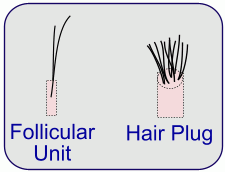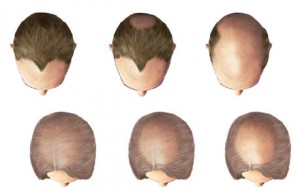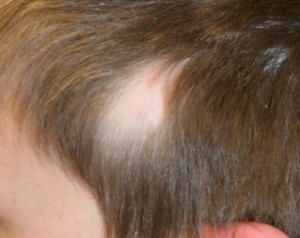Archive for the ‘men hair restoration’ Category
Tuesday, November 2nd, 2010
Dr. Mohebi is the medical director of US Hair Restoration’s hair transplant centers in Southern California. With offices centrally located amongst the major cities of Encino, Beverly Hills, Orange County, San Diego, and San Francisco, CA, Dr. Mohebi has made himself available to almost every major part of the California’s population. In addition, Dr. Mohebi is the author of Hair Restoration Blog where he responds to the questions/concerns of many aspects of hair loss and hair restoration. In addition to his blog where Dr. Mohebi answers basic questions regarding hair loss and hair restoration, the doctor has also been interviewed (for the second time) by Hair Care Beverly Hills of Buzymoms.com
Below you can see some of Dr. Mohebi’s main responses to questions posed by the interviewer.
In response to the question of whether or not clients are eligible whom have already had hair restoration and are unhappy with the results, the doctor responded: Yes, hair transplant repairs are possible and are a good portion of the hair transplant surgeries performed in our Southern California offices (mainly located in Beverly Hills, Encino,Orange County, and San Diego hair transplant consultation). Many people may have unnatural results from previous hair transplants due to the older techniques (such as plug surgery), but some may even have problems with recent hair restoration procedures due to technical issues or lack of proper judgment on the part of the hair transplant surgeon. In most situations, the repair is easy and can be done in one to two sessions.
In regards to the question of whether or not there is a minimum age requirement for hair restoration, Dr. Mohebi stated: It is not unusual for a hair transplant surgeon to discourage a person younger than 24 from pursuing a hair restoration surgery. However, nowadays microscopic techniques being used to evaluate the miniaturization of susceptible hair can assist surgeons in predicting the final pattern of hair loss. By being able to predict each patient’s final balding stages, we are able to see where the pattern of baldness is heading and based on that, we can now recommend hair transplant surgery at an earlier age.
When asked about the donor scar following a hair transplant and whether or not it will be visible, Dr. Mohebi responded: If you do not plan on shaving your hair after your hair transplant surgery, your donor wound will never be visible. However, if you plan on shaving your head for any reason, you may choose to have a FUE or Follicular Unit Extraction procedure done rather than the general FUT procedure through removing a strip from the donor area. FUE transplant eliminates the visibility of a linear scar on the back of your head and is the best option for patients who plan on shaving their head or keeping their hair very short in the future.
To determine recommended options or graft numbers for your personal case, Dr. Mohebi suggests attending an in person consultation in any of his five California regional offices. In addition, he stated: Yes, the initial consultation with me (Dr. Parsa Mohebi) is complimentary in any of our California hair transplant offices in Beverly Hills, Encino, Orange County, San Diego, and San Francisco.
Lastly, the interviewer inquired as to what clients should bring with them to their free consultations and the doctor replied: Anything related to your hair loss and hair restoration, including family history of hair loss, other medical conditions that may have been attributed to ones hair loss, medical, surgical or even cosmetic changes that you like and may help you have a better result after a hair restoration procedure.
Tags: Beverly Hills Hair Restoration, Beverly Hills hair transplant, Dr. Mohebi, Encino hair transplant, fue, Los Angeles hair transplant, San Diego hair restoration, San Francisco hair transplant, southern california hair restoration
Posted in California hair transplant, hair transplant, hair transplant repair, men hair restoration, Orange County hair transplant, San Diego hair restoration | No Comments »
Friday, October 22nd, 2010
Q:
Dr. Mohebi,
I live outside of California and am interested in seeing you for my hair restoration procedure. I have attached my pictures to this email along with a few quick questions that I have in regards to hair restoration. Could you please check them out whenever you have a free moment and let me know what your personal recommendations are?
- What is the approximate number of grafts required to achieve sufficient density (if not a lot) and the approximate cost of the whole process?
- How long will it take me to get back to my work and how soon I will see the results?
- Lastly, please do let me know any other important information that is relevent to the his whole procedure.
Thanks!
A:
Dear Inquirer,
First off, I just want to thank you for your interest in our hair restoration services and let you know that I have forwarded your information and pictures to be included in our patient information system for further review. I also wanted to take a quick moment to look over your photos and respond personally to your inquiries.
Here are my responses to your questions in the order they were received:
- What is the approximate number of grafts required to achieve sufficient density (if not a lot) and the approximate cost of the whole process?
You are a class VI hair loss patient and would require the maximum number of grafts possible in one session to acheive the density you are striving for. The number is generally above 2500 grafts for people who have never had a surgery, but may fluctuate through the range of 2500 to 4000 grafts based on your own scalp laxity and density of hair (to be determined when you are here in our office).
The cost for hair transplants at US Hair Restoration are based on the number of grafts transplanted and the standard charges are as follows for Follicular Unit Transplants:
- $4 per graft for the first 2500 grafts; all additional grafts are charged at half price ($2 per graft).
In addition, your travel expenses will be reimbursed towards 10% of the cost of surgery (up to $500).
In addition to reimbursement on travel, we will book a hotel near our office for you for 2 nights with free transportation between the hotel and our office for your visits.
Lastly, we also have a standby program available for anyone which a flexible schedule and willingness to book their surgery date within 7-10 days of the procedure itself (visit us at www.ushairrestoration.com for more information on that offer).
- How long will it take me to get back to my work and how soon I will see the results?
The procedure for a strip hair transplant takes one whole day (from approximately 7am to 5pm) and you are required to return the day after for your procedure for a hair wash. With these basic requirements, you have the capability to fly back home as early as the day after your surgery and continue all routines as before (aside from hair washing which you will do as instructed for the first 4 days following the procedure). You will be fully functional the first day after surgery, but you may have some swelling for 3-4 days following.
Visible results of your hair transplantation will be seen approximately 6-10 months following the procedure itself and may continue to develope into the year and a half mark.
- Do let me know any other important information that is relevent to the his whole procedure.
You can find more great information about hair transplant methods with US Hair Restoration on our website: www.ushairrestoration.com or our blog: www.ushairrestoration.com/blog
Tags: before hair transplant, Consultation, General Hair Transplant Information, Graft Number Inquiry, hair transplant, Patient Inquiry
Posted in California hair transplant, hair transplant, men hair restoration, Uncategorized | No Comments »
Sunday, May 2nd, 2010
 Q: Q:
I started the Propecia at the beginning of March (8 months ago), prior to the procedure last March. Should I still be on it?
A:
It is great to hear from you and I am glad you are happy with the result of your hair transplant. The final result of your hair may still get better up until one full year after your surgery if you allow your hair on the transplanted area to grow longer.
Finasteride as a hair loss medication was mostly prescribed for prevention of shock loss or losing native hair on the balding areas after a hair transplant. You have significant miniaturization on the front, top and crown area (90%-100%), which makes your preexisting hair on balding areas prone to further hair loss. Now that you had your transplanted hair grown, you can decide to stop Propecia. By doing that, you may risk losing your own hair on the balding area further (transplanted hair does not need Propecia for its growth) or you can continue taking the medication to increase the longevity of your preexisting hair on those areas.
Tags: after hair transplant, finasteride, propecia, shock loss
Posted in hair loss medication, hair loss products, hair transplant, men hair restoration | No Comments »
Saturday, February 20th, 2010
Staring at the floor and increasing the tension or stretching the donor wound section, I feel that this type of movement is straining the back of my neck. I sense there’s not much laxity in that area, especially in comparison to right side. No vertical movement seems to be possible for the subcutaneous tissue or the galea at the donor area. I’m not sure if this is supposed to be happening. If the tension doesn’t go away, what other alternatives do I have?
One more note, I heard about doing scalp exercises prior to and after HT surgeries. What are they?
Sincerely,
-
A:
It’s commonplace to feel tightness on the side in which we took off the strip after hair restoration. The skin takes about two to three weeks to become accustomed to the wound and it gets stretched out to make up for the area that was removed. I strongly urge my patients to do scalp exercises before a hair transplant surgery in which I’ll be performing a strip technique. But I also tell them they ought to make sure to not do scalp exercises after a hair restoration procedure for the first few months.
I’d tell you to avoid any kind of exercise or movements that increase tightness in that donor area, up until you feel there is no more tightness whatsoever. When there is too much tension and stretching in that donor area after a hair restoration surgery, a patient may widen the donor scar, which isn’t desirable.
Thanks for your inquiry.
Tags: after hair transplant, Donor Wound, hair transplant donor wound care
Posted in donor scar, men hair restoration | No Comments »
Tuesday, January 26th, 2010

Q:
About 18 years ago, I underwent a hair restoration procedure with primitive technology. Nowadays, I’m very reluctant to ever do such a thing again. Since I had the transplant, I’ve been wearing a hair piece, which I don’t really like to do. I wonder: is it possible for my hair to ever look the way it did in my twenties? And, also, what if I don’t have enough donor hair, can I still get a hair transplant? If I don’t have enough donor hair, body hair is possible, right?
Also, I’m an algebra teacher, anyway this can be afforded on a salary like mine?
Sincerely,
-
A:
I appreciated the email. Here are my answers to your questions, in chronological order.
1. Most of the time, it can be corrected. A lot of our patients actually have needed repair hair transplants. Their situation was very similar to yours in that they had plugs or micro-graft surgeries.
2. Whether your donor hair is sufficient, I don’t know. I have to examine you for that. A good majority of people have enough hair to cover up a hair plug procedure. Some men have so much donor hair that they can even cover up other areas of hair loss.
3. It is plausible to use body hair, but it is much better to use head hair. If you’re in a situation in which you have virtually no scalp hair, and also high-quality body hair, you could be a good candidate for a body hair to head procedure.
4. I can’t tell you if your hair transplant surgery will be affordable right now. Only after I evaluate you. It’ll all be based on the number of grafts that you require. We offer discounted rates to qualified candidates on our standby program.
5. Make sure to attach photos of yourself and email them to me. The photos we need of your head are from the front, left and right sides, top and back. Make sure to also include a picture of the hair plugged areas of your head so I can take a better look at it.
After taking a look at your head shots, I’ll have a phone consultation with you and talk about the options that are open to you. It’s also a time where I can reply to all your questions.
Tags: donor hair, hair plug, hair restoration, hair restoration procedure, hair restoration surgery, hair transplant, hair transplant surgery, old hair plug, plug, repair hair plug
Posted in hair transplant, men hair restoration | No Comments »
Tuesday, January 19th, 2010

Q:
Hey Dr. Parsa Mohebi,
I’m grateful you took time out to see me on Saturday. The letter that gave a summary of what we talked about was very thorough and I just wanted to say thanks for that.
Since the last time we met, I did some of my own research and came up with a few queries:
1) When it comes to giving a name to my hair loss pattern, is Alopecia the correct way to describe it?
2) Would a Cortizone shot be an option for me?
3) Is laser therapy OK?
4) If I happen to use minoxidil, I’m wondering if it has to be 2% or would a higher percentage result in more hair growth and faster hair growth?
5) I was told to receive a complete medical evaluation, do you know of a doctor I can go to? I want someone I can trust.
Thanks again for taking the time to see me and also to accommodate my questions.
Sincerely,
Stephen
-
A:
Hello Stephen,
I’ve provided answers to your questions in chronological order.
1) When it comes to giving a name to my hair loss pattern, is Alopecia the correct way to describe it?
Alopecia, literally, would be defined as hair loss. There are many different types of alopecia or hair loss, such as male patterned alopecia or female patterned alopecia or alopecia cicatricial. I believe the pattern on your head is a male pattern since hair was lost in the frontal area as you kept hair on the donor area intact. This is the reason you may be a potential candidate for a hair transplant since your medical evaluation stated that you’re not medically treatable for hair loss.
2) Would a Cortizon shot be an option for me?
Absolutely not. But steroid shots are sometimes used for Alopecia Areata (AA), which is an autoimmune disorder. Alopecia Areata is a hair loss condition with patchy hair loss spots. Your condition is not Alopecia Areata.
3) Would you consider laser therapy?
I do not recommend laser therapy for hair loss in the form of laser comb or laser machines because of the lack of solid medical evidence that support their effectiveness at this time.
4) If I were to use Monoxidil, does it have to be 2% or a higher percentage would yield more and faster hair growth?
You can start with 2% and then you need to be re-evaluated in six to 12 months and a treatment plan might need to be adjusted at that time.
5) you recommended a complete medical evaluation, could you please recommend someone that you trust?
Any good internist or endocrinologist could follow through with the lab works that you need. Our letter includes the list of medical conditions that should be considered and lab works to rule out those women like you who have hair loss. You can share my letter with any good internist or endocrinologist and he or she should be able to follow through with your lab result and treat any treatable conditions that could possibly be found.
Have a great day,
Tags: alopecia areata, hair loss, hair loss pattern, hair loss treatment, laser therapy, laser therapy for hair loss, minoxidil
Posted in Bakersfield hair transplant, California hair transplant, hair loss medication, hair loss products, hair transplant, men hair restoration, Newport Beach hair transplant, Orange County hair transplant | No Comments »
Friday, January 15th, 2010

Not too long ago, consumer columnist David Lazarus, in a Los Angeles Times story, mentioned he had visited an open house at a hair transplant office and, to his surprise, saw that there were a lot of men who showed up. For him, it was unexpected. Lazarus said he had a conversation with the owner of the hair transplant center and learned that, in this fragile economy, a lot of men who are shopping for a hair transplant are thinking that it will better their job opportunities by having a full head of hair.
According to a CNN report, findings have shown that people who are better looking, or are slim (vs. fat), or who are of a younger age tend to have better success in the nation’s economy. These “lookers” bring in more money, have a better chance of moving up in the company, and tend to be treated more graciously. Albeit the results of this study may be a bit disturbing, it may be a somewhat accurate reflection of our society.
When we take into account these conclusions, it ought to come as no surprise that there are balding men in America who really hold fast to the idea that they can boost their chances of landing a job by sporting a full head of hair. It might just end up being a mental edge, or a self-esteem enhancer, for these adult males to give a good impression during their interviews.
All things considered, in my humble view, the crucial aspect of a job interview is a how a potential employee presents himself to his interviewer. The responses she gives, her demeanor, attitude about previous employers, and overall impression.
But, these days, some men believe it wouldn’t decrease their chances to have a full head of hair. In addition, due to the slumping economy, a hair transplant cost is at an all-time low for high-quality hair restorations. If there ever was a time to get a hair transplant for those who, under different circumstances wouldn’t get one, now is the time.
Tags: balding men, hair loss, hair loss and job prospects, hair restoration, hair transplant, job prospects, men hair loss
Posted in Bakersfield hair transplant, California hair transplant, hair transplant, men hair restoration, Newport Beach hair transplant, Orange County hair transplant | No Comments »
Tuesday, January 12th, 2010

In the past 30 years, alternate types of therapy for enhancing wound repair have been mentioned. For this entry, I wanted to talk about the cutting-edge areas of stem cell therapy and gene therapy in wound healing. When it comes to gene therapy, it was first put into practice for treating congenital defects. Now, it is a fresh alternative for affecting wound repair. To speed up the process of wound closure, genes encoded for growth factors or cytokines revealed the greatest potential.
Most gene delivery systems have roots in viral transfection, naked DNA application, high pressure injection, or liposomal vectors. Embryonic and adult stem cells posses an extended self-renewal ability with the capacity to differentiate into various tissue types. Different types of sources, such as bone marrow, peripheral blood, umbilical cord blood, adipose tissue, skin and hair follicles, have been used to separate stem cells to speed up the healing response of acute and chronic wounds.
Not too long ago, the grouping of gene and stem cell therapy has come to the forefront as a potential option to care for chronic and acute wounds.
For potential hair transplant patients, this breaking development about gene and stem cell therapy in hair restoration is fantastic news because a rapid healing from stitches in the donor area would make for a much quicker and painless procedure. There are all kinds of different types of hair loss, but, if a hair loss sufferer undergoes a hair transplant, it would be imperative that his stitches would heal quickly.
Source information was provided by the following authors: Branski LK, Gauglitz GG, Herndon DN, Jeschke MG.
Department of Surgery, The University of Texas Medical Branch and Shriners Hospitals for Children, Galveston, TX 77550, United States.
Tags: donor scar, gene therapy, hair loss, hair restoration, hair transplant, stem cell therapy, wound healing, wound treatment, wounds
Posted in Bakersfield hair transplant, California hair transplant, hair transplant, men hair restoration, Newport Beach hair transplant, Orange County hair transplant | No Comments »
Tuesday, January 5th, 2010

The fruit Serenoa Repens produces Saw Palmetto. Saw Palmetto is an extract of it. Saw Palmetto has plenty of fatty acids and phytosterols. Considered by many to be an alternative medicine for different kinds of indications, most notably benign prostatic hyperplasia (BPH).
People who are diagnosed with benign prostatic hyperplasia (BPH) have enlarged prostates have difficulty urinating to the point that patient may need prostate surgery for it.
The part Saw Palmetto plays in hair restoration has been well researched. Incredibly, for a lot of people, Saw Palmetto is a plant-based treatment which, up to a certain point, can reverse the hair loss process or delay hair loss. Saw Palmetto’s bio active ingredients block the conversion of testosterone into dihydrotestosterone (DHT).
So, on the hair follicle level, Saw Palmetto is able to halt the process of hair loss. In addition, Saw Palmetto promotes the increased thickness of miniaturized hair, helping them grow longer. In mechanism, the Saw Palmetto effect is sort of similar to finasteride or other DHT blockers. Available in oil extract, Saw Palmetto can be used topically on hair scalps or as pills to treat prostate enlargement.
Tags: balding prevention, benign prostatis hyperplasia, BPH, dht, dihydrotestostrone, finasteride, hair loss product, hair loss treatment, male patterned baldness, saw palmetto, Saw Palmetto Extract
Posted in California hair transplant, hair loss medication, hair loss products, men hair restoration, Newport Beach hair transplant, Orange County hair transplant | No Comments »
Friday, January 1st, 2010

The other day, we just completed a hair transplant procedure with a child who has Congenital Temporal Alopecia (CTA). The day he was born, he had a bald patch on his head. It really weighed heavy on his mind and the thought of waiting until Christmas break (the time his parents had first planned to get it restored) was absolutely unbearable. The surgery was a success. We closely packed 470 follicular unit grafts onto the bald patch of his temple area. He’s really excited and anticipates the final growth of his hair grafts in the next several months.
Congenital Temporal Alopecia is a hair loss condition which is present at birth and takes the form of a patchy hair loss on a child’s temple area of the head. The bald patch can be made up of very fine hair. It’s a non-scarring type of alopecia which, reportedly, responds rather positively to hair transplant surgery.
Tags: alopeica, congenital temporal triangular alopecia, non scarring alopecia, patchy hair loss, TTA
Posted in men hair restoration, Uncategorized, women hair loss | No Comments »
|
|








